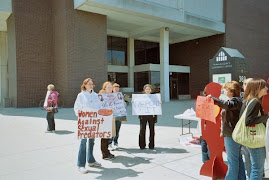LONG BEACH - One month after residents of an Alamitos Beach neighborhood told the City Council that something must be done about an apartment building in which more than a dozen paroled registered sex offenders were living, city officials are responding.
On Tuesday, the council will consider amending city law to establish residency requirements for registered sex offenders.
However, what exactly the law entails still remains unclear.
The item listed in Tuesday's meeting agenda, which was made available Thursday afternoon, is only one sentence long and doesn't include the usual staff reports that are given to council members and city officials to further explain the agenda items. The staff reports also are available online at www.longbeach.gov.
The single page located where a staff report should be says the information "will be distributed when available." A representative of the city attorney's office, which is preparing the city code amendment, said Friday the details of the new law wouldn't be available until sometime today because it is still being written.
The council unanimously supported the creation of new local sex offender laws on Feb. 18, and that action sheds some light on what restrictions may be included in the ordinance.
The amendment that had been proposed at that meeting by Councilwoman Suja Lowenthal of the 2nd District, where the apartment building at 1149 E. First St. is located, would restrict sex offenders from residing within 2,000 feet of licensed child-care facilities, or within 2,500 feet for "high risk" sex offenders. Lowenthal also proposed limiting the number of sex offenders that can live in a multi-family residence.
Under state law, convicted sex offenders released from prison since 2006 may not live closer than 2,000 feet from K-12 schools or parks. Registered sex offenders on parole also aren't allowed to live together in a single-family dwelling unless they are legally related by blood, marriage or adoption.
The 12-unit Alamitos Beach apartment building is near two day-care centers. The state's Megan's Law Web site, which identifies registered sex offenders with their address, at the beginning of the year listed 15 sex offenders living in the apartments.
A spokesman for the state Department of Rehabilitation and Corrections since has said that some of the sex offenders will be moved out of the apartment building to other locations. On Sunday, 10 sex offenders were still listed as residents of the building on the Megan's Law site.
Inspired at the Feb. 18 meeting by the comments and ideas of several concerned residents, the council additionally asked the city attorney's office to look into other ways the city could curb the number of sex offenders in Long Beach neighborhoods.
Some of those ideas included allowing only sex offenders who previously had been residents of Long Beach to return here to live when on parole, redefining what a single-family residence is in order to limit the number of offenders living in an apartment building, and if there is any way to prevent landlords from moving out tenants to bring in sex offenders.
Former tenants of the Alamitos Beach apartments had complained to the council that they weren't told about the sex offenders moving in and then were asked to move out to make room for more.
Earlier agenda notice
In other business Tuesday, the council will choose between two versions of a new policy designed to inform council members and the public earlier about items going before the City Council.
Under the proposed policy, which the council had asked for in December, council agendas would have a "tentative agenda" section that lists items to be considered in the future, but on which no action is to be taken at the upcoming meeting, according to the city attorney's office.
Both versions of the change would include exceptions for matters that are ceremonial, involve a gift or grant, involve an Alcohol Beverage Control license, are referred to the council by the city attorney for action, are related to elections or are referred from a council committee, the report says.
"Version A" also would also allow an exception for items placed jointly on the agenda by three council members when possible adverse actions could result if the item is delayed.
"Version B" would allow that same exception, but also an exception for such items placed jointly on the agenda by two city council members and the mayor, or jointly by the city manager and the mayor.
paul.eakins@presstelegram.com, 562-499-1278



No comments:
Post a Comment